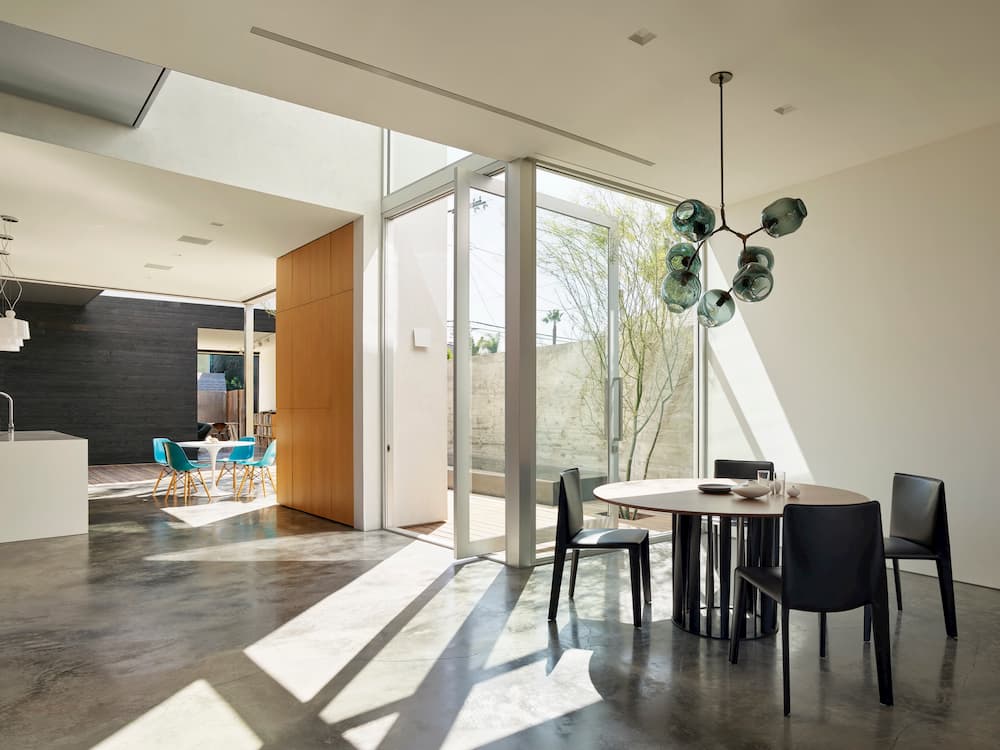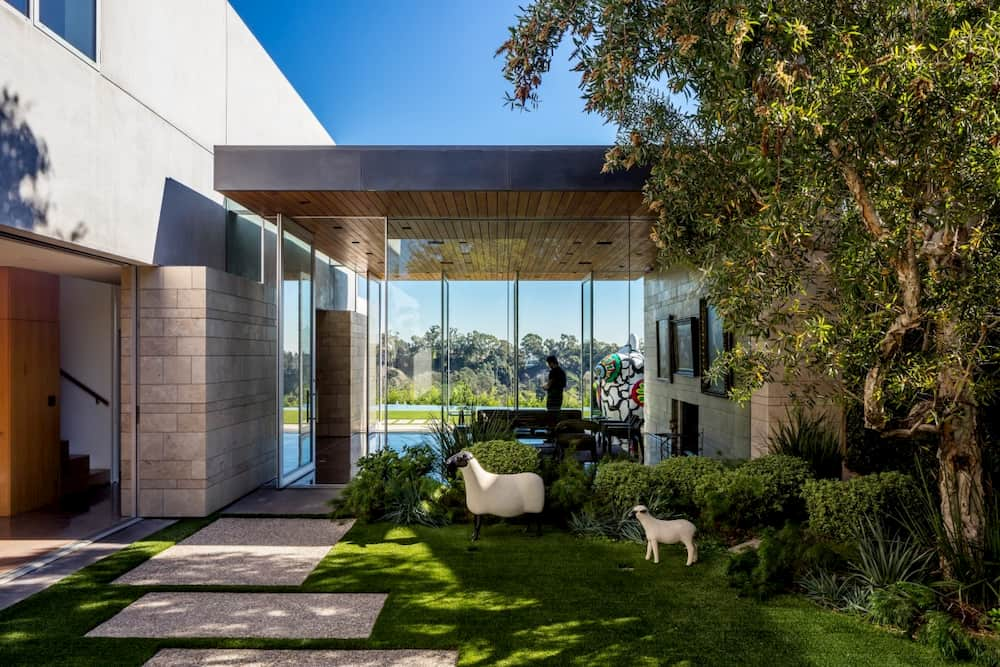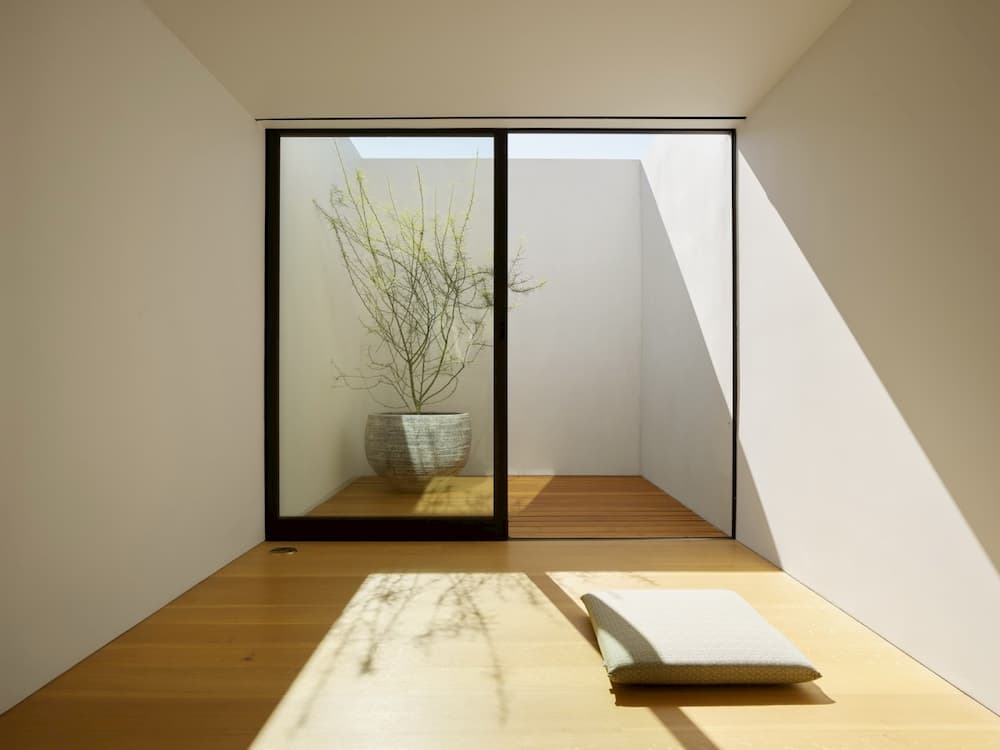
The use of natural light in home design and construction is a major component of California modern architecture, and is something that we have always embraced as a key tenet of our design philosophy. After all, California is home to an amazing climate and landscape; doing everything in our power to take advantage of it only makes sense.
Further, the very act of maximizing natural light forces us to embrace certain practices—the extensive use of glass in our material palette, the deliberate development of courtyards and skylights, the conscious orientation of a home with its site and view—reinforces other key concepts that form the bedrock of design considerations upon which California Modernism stands. In embracing natural light, we simultaneously embrace the indoor-outdoor living and a blurring of boundaries that define modern residential architecture.
Below, we explore three ways that modern residential architects, ourselves included, leverage natural light for a variety of purposes related to aesthetics, enjoyment, and utilitarian ends.
Light, Color, Space, and Texture
One of the reasons that modern architecture embraces natural light is purely aesthetic: Depending on how, when, and where it is leveraged, natural light can achieve a variety of effects inside a home. At its simplest, it offers a beautiful ambient light that emphasizes the simplicity of a home’s design and construction, as can be seen below in the Spectral Bridge House and Waverly Residence below.

But it can also be used consciously to enhance a home’s spaces, colors, and textures—often to dramatic effect. The way light reflects off of surfaces, becomes infused with color as it passes through various materials, and highlights ridges or other textures can be difficult to replicate in other ways, but fills a home with character and interest. The way that the light interacts with the trees surrounding the Carrillo residence and creates a dappled effect, as seen below, is a perfect example of this.

.jpg?width=1000&name=ERYC-2%20(1).jpg)
Biophilic Design
Another reason that natural light is often leveraged in modern residential architecture and design is that it makes us feel better.
As human beings, our bodies have evolved over millennia to react to the sun and its light. Our internal circadian rhythm is predicated on the rising and setting of the sun; when we are asleep, sunlight falling on our skin decreases the body’s production of melatonin (the so-called “sleep hormone”) which allows us to wake up gradually and without the use of jarring alarms; sunlight empowers our bodies to generate Vitamin D—the list goes on.
In architecture, approaches which seek to take advantage of this fact are often referred to as biophilic design: Design which works to enhance the body and health of the individual. Some examples of biophilic design in action can be seen in the 19th Street residence, below.


Functionality and Utility
Maximizing natural light in a home’s design can also help play a very utilitarian role. The more light a house receives, the less energy the inhabitants will need to consume in order to light and heat the home, lowering the carbon footprint of the inhabitants.
The drive towards utility doesn’t, however, mean that a home’s design and layout are always going to maximize natural light. In some cases, such as on a plot or site with little tree cover, it might involve minimizing that light so that an outdoor space might be more enjoyable and usable. Covered outdoor spaces, courtyards, and screens, for example, can all be extremely effective ways of allowing an inhabitant to enjoy natural sunlight while simultaneously protecting them from the sun.
.jpg?width=1000&name=EYRC-1%20(1).jpg)
Beauty, Health, Enjoyment
Whether it is being pursued for its aesthetic, healthy living, or utilitarian purposes, the ability to maximize and manipulate the amount of natural light that a home receives is a critical skill for any modern residential architect to have mastered.
From the very conception of a project, the designer should understand how the sun and its light interacts with the site in order to select the materials, orientation, and layout that best addresses the needs and desires of the homeowner.

Written by Natalie LaHaie
Natalie LaHaie is the Business Development and Marketing Director at Ehrlich Yanai Rhee Chaney Architects (EYRC). She is a graphic designer by trade and a natural strategic thinker, employing design to express vision, direction, and values. With over a decade of experience in the field of architecture and design, she admires the role of architecture in bringing people together from all backgrounds and walks of life - specifically through community, education, and civic buildings.
